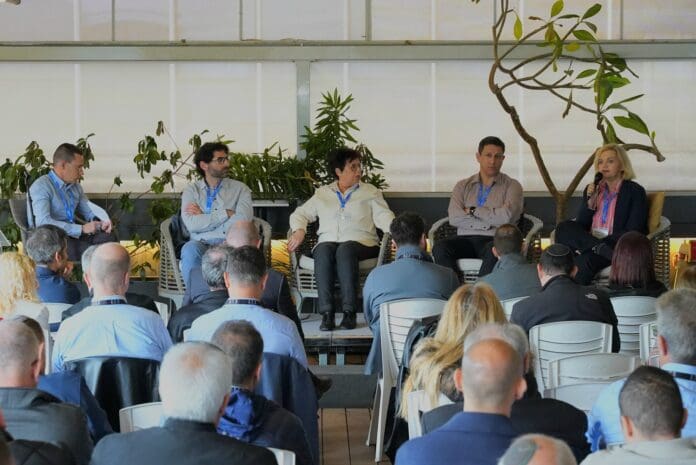This post is also available in:
 עברית (Hebrew)
עברית (Hebrew)
As part of the “Definitely Defense” conference organized by iHLS in collaboration with Amit Pollak Matalon & Co. and Deloitte, a panel of leading experts in the defense sector gathered to discuss the latest industry trends and ongoing innovation in defense technology. The panel included Eli Tidhar, Deloitte Defense Sector Leader; Dr. Gal Harari, CTO at DDR&D (MAFAAT); Dr. Avital Schrift, VP of Core Technologies at IAI; Eli Friedman, VP for Innovation at Elbit Systems; and Naomi Israeli, CIO at Rafael. Together, they provided valuable insights into the technological advancements and challenges shaping the future of defense systems.
Technological Shifts in Defense
Geopolitical events such as the Russia-Ukraine war, the Swords of Iron War, and the tensions in the Indo-Pacific region have all created technological shifts in the defense sector. Dr. Gal Harari highlighted that this has led to a global and local arms race, leading to an increased demand for cutting-edge technologies such as 3D printing, microelectronics, drones, and more. These technologies are rapidly integrating into existing defense systems, fueling innovation across the sector.
Dr. Avital Schrift reflected on the growing importance of defense tech in Israel and globally over the past year and a half. She emphasized the significance of Israel’s technological independence, particularly in the context of Israel’s defense capabilities. Schrift shared an anecdote that on the night of the Iranian missile attack, she felt confident in the systems she herself helped develop, emphasizing the importance of self-reliance.
Naomi Israeli noted three key trends in information systems that emerged after October 7th. These included the rise of cyberattacks, the need for remote air-gapped systems due to workers living in areas of conflict, and changes in supply chain including the integration of AI and cloud adoption.
Challenges and Solutions
Balancing a startup’s needs and aspirations and national defense requirements could be difficult. According to Dr. Harari, understanding key issues of the defense community is crucial for any defense-tech entrepreneur. Additionally, governments and large defense corporations should assist startups with oversight and regulation, in order to minimize the risk for investors.
Dr. Schrift pointed out the challenges in scaling products from proof of concept (POC) to real-world, operational use. While proof of concept may work in controlled environments, defense-tech companies must ensure that their solutions can operate in dynamic, unrestricted environments and remain cost-effective for military clients.
Corporate Venture Capital and Collaboration
In terms of Corporate Venture Capital (CVC) in the defense tech industry, Eli Friedman noted the use of “venture clienting,” where large corporations guide startups through the development process. He questioned whether traditional CVC models are the best fit, suggesting that more advanced models may be required to foster innovation effectively.
Working with Large Industries:
Naomi Israeli emphasized the importance of regulatory compliance when developing defense solutions, as well as adjusting them to air-gapped networks. Additionally, Eli Friedman mentioned that it is important for the corporation to remain flexible, adjusting to the startup. He said that without startups, the rate of innovation would be much lower.
Dr. Harari added that programs like Innofense, which connect startups with the MOD, are essential for fostering productive collaborations.
Conclusion: Shaping the Future of Defense Innovation
The defense tech sector is rapidly evolving, with new technological breakthroughs emerging to meet the ever-changing demands of modern warfare. With the right collaboration and investment in research and development, the future of defense technology looks promising, positioning Israel at the forefront of this vital sector


























